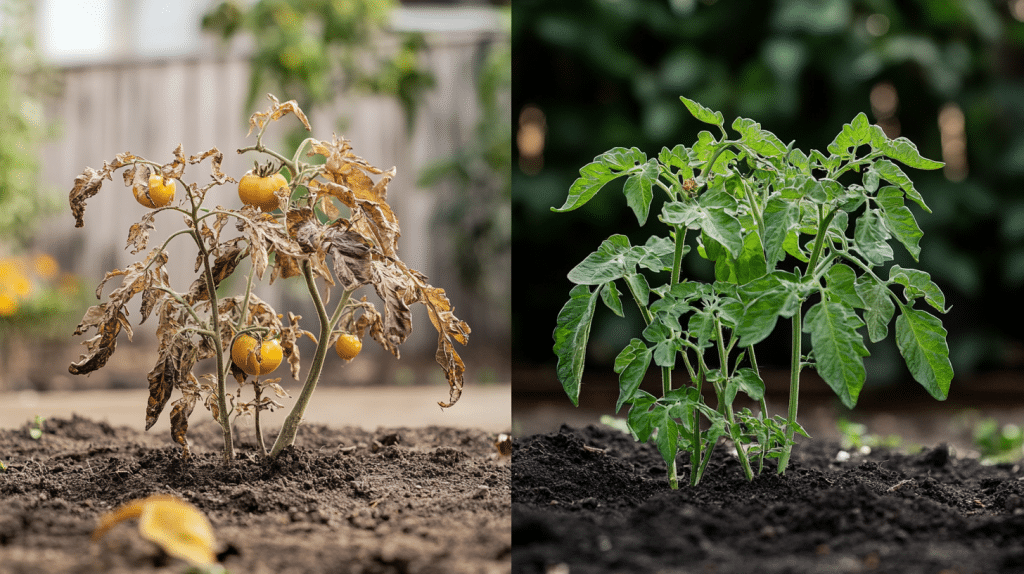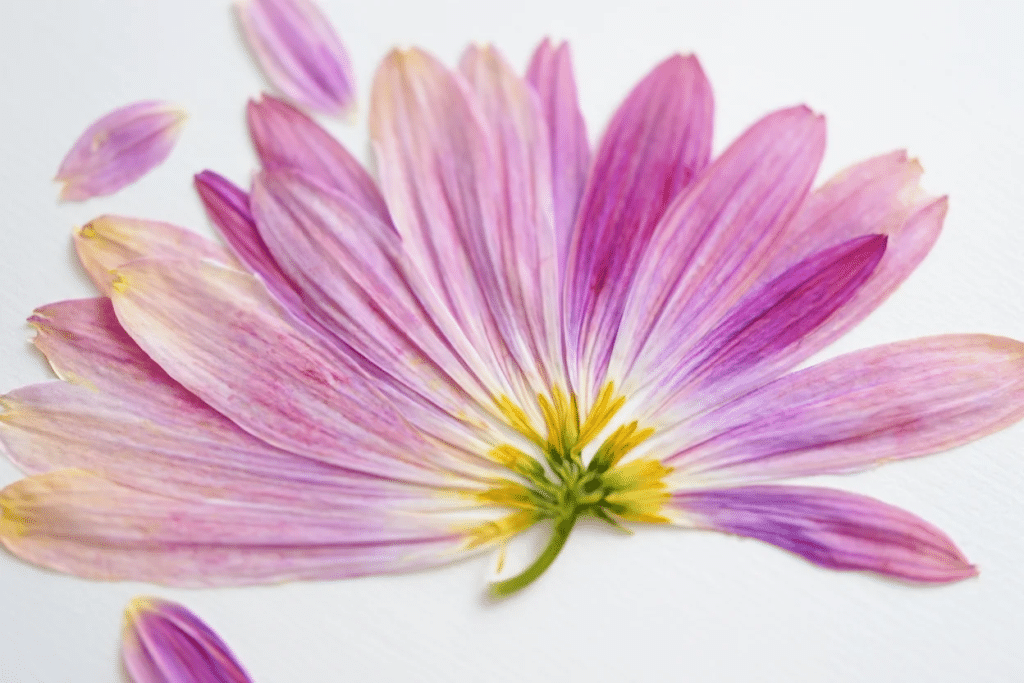Have you noticed your tomato plants drooping with yellow leaves? Your garden friends might be thirsty! I’ve seen many gardeners lose their crops because they missed the early signs of water stress.
Water is the lifeline of your tomato plants. Without enough, they can’t make food, grow fruit, or fight off bugs and disease. An underwatered tomato plant shows clear signs – but many folks miss them until it’s too late.
The good news? You can bring those sad plants back to life with the right care steps. I’ll show you how to spot water issues early, fix them fast, and set up systems so it won’t happen again.
Ready to turn those wilting plants into strong, fruit-bearing stars of your garden? Let’s get those tomatoes the drink they need!
Tomato Plant: Watering Needs by Growth Stage
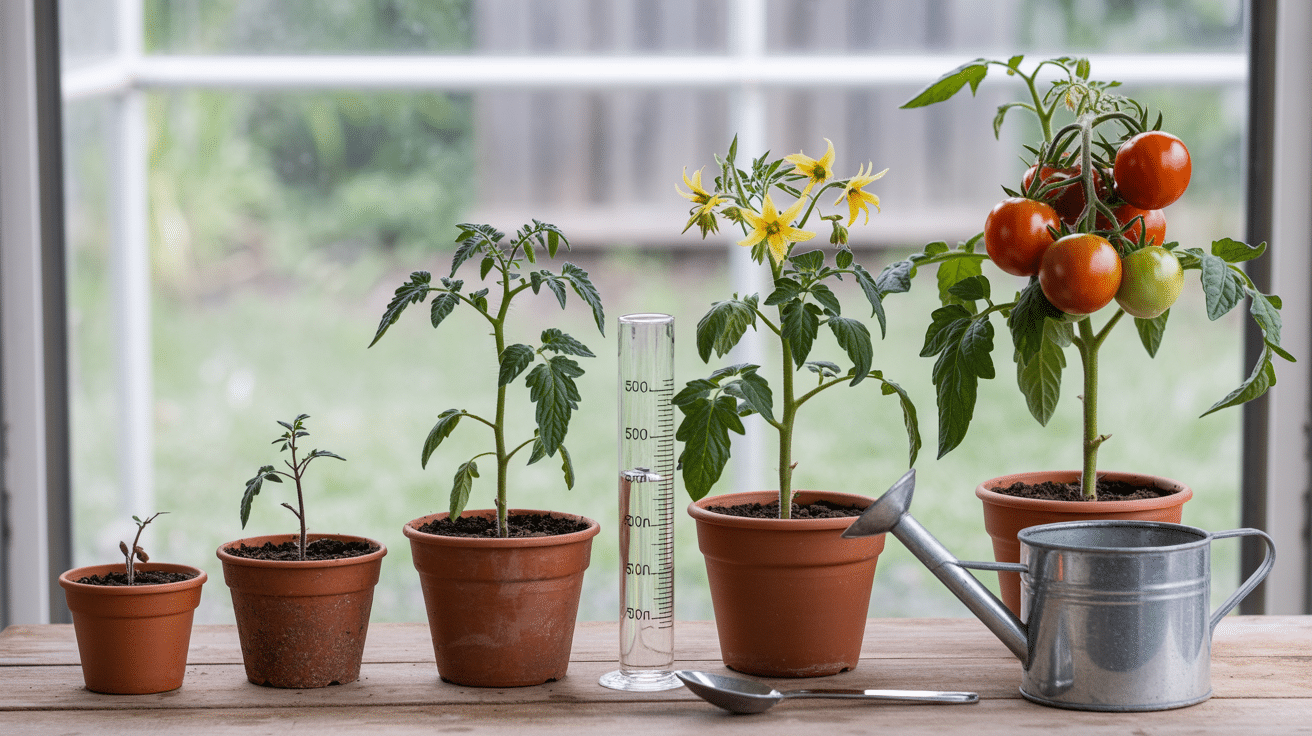
Water needs for tomatoes change as they grow. Most garden failures happen because folks don’t adjust their watering routine to match what the plants need at each stage of growth.
I’ve found that knowing exactly how much water to give at each stage can make the difference between sad, limp leaves and strong, productive plants. An underwatered tomato plant starts showing stress signs when it gets less than 1-2 inches of water weekly, depending on its growth stage.
Let me break down what your plants need throughout their life cycle:
| Growth Stage | Water Amount | Watering Frequency | Special Notes |
|---|---|---|---|
| Seedling (0-3 weeks) | Light, even moisture | Daily or when top 1/2 inch is dry | Too much water can cause damping off |
| Young Plant (3-8 weeks) | 1-1.5 inches per week | Every 2-3 days | Water at soil level to keep leaves dry |
| Flowering (8-12 weeks) | 1.5-2 inches per week | Every 2 days or daily in heat | Even moisture helps prevent blossom drop |
| Fruiting (12+ weeks) | 2-3 inches per week | Daily during hot weather | Water deeply to reach all roots |
| Mature Harvest Stage | 1-2 inches per week | Every 2-3 days | Reduce water for better flavor |
Underwatered Tomato Plant: Key Signs to Notice
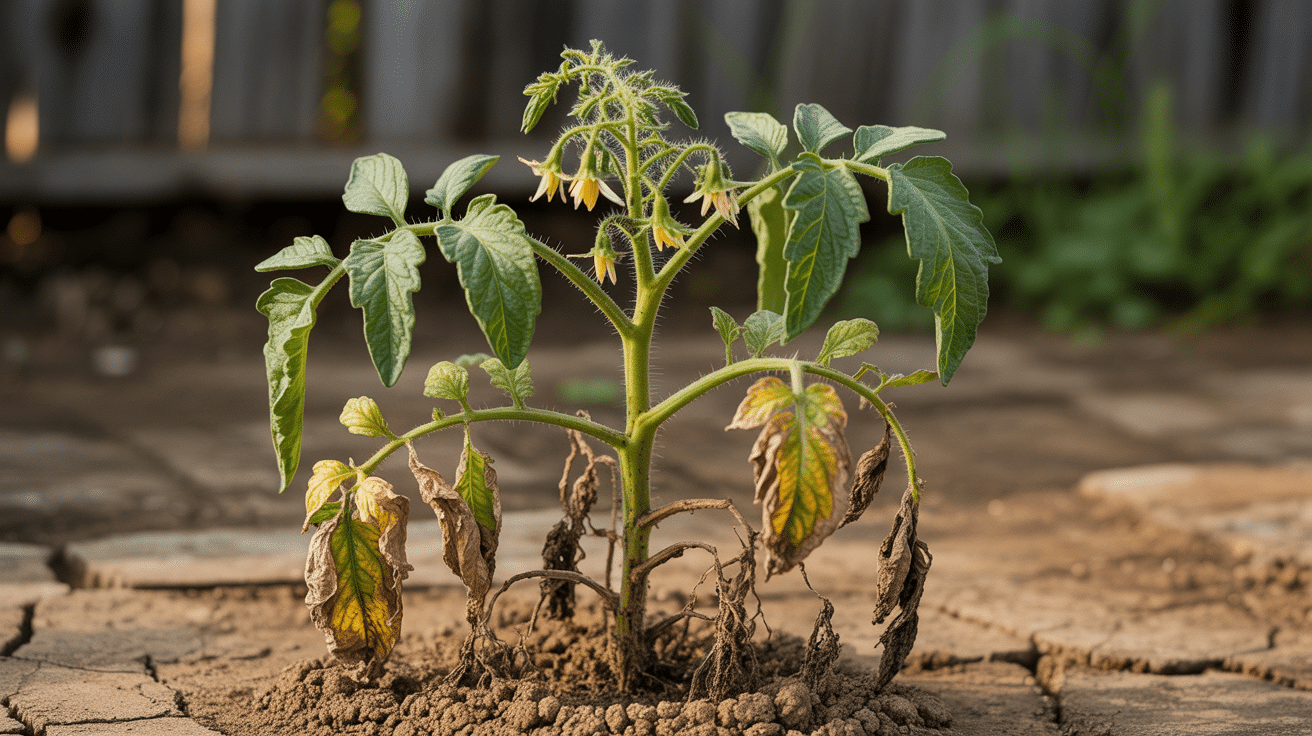
Spotting water stress early can save your tomato crop. When I check my plants, these signs tell me it’s time to grab the watering can right away:
- Wilting leaves: Even with stems that look fine, leaves that droop downward, especially during the hottest part of the day, signal your plants need a drink.
- Yellow bottom leaves: The lowest leaves turn yellow and may fall off as an underwatered tomato plant redirects water to newer growth and fruit.
- Dry, cracking soil: When soil pulls away from the edges of your container or garden bed, it’s far too dry for healthy root function.
- Slow growth: Plants that should be getting taller or bushier but seem stuck at the same size for days are likely water-stressed.
- Blossom drop: Flowers that fall off before forming fruit often indicate the plant lacks enough water to support fruit development.
Pay close attention to these warning signals in your garden. Your plants communicate their needs – you just need to know how to listen to what they’re saying.
Ways to Keep Your Tomato Plants Hydrated
Proper watering techniques can prevent an underwatered tomato plant situation before it starts. I’ve found these five methods work best in my garden to keep plants happy through the hottest months:
1. Deep Watering Method
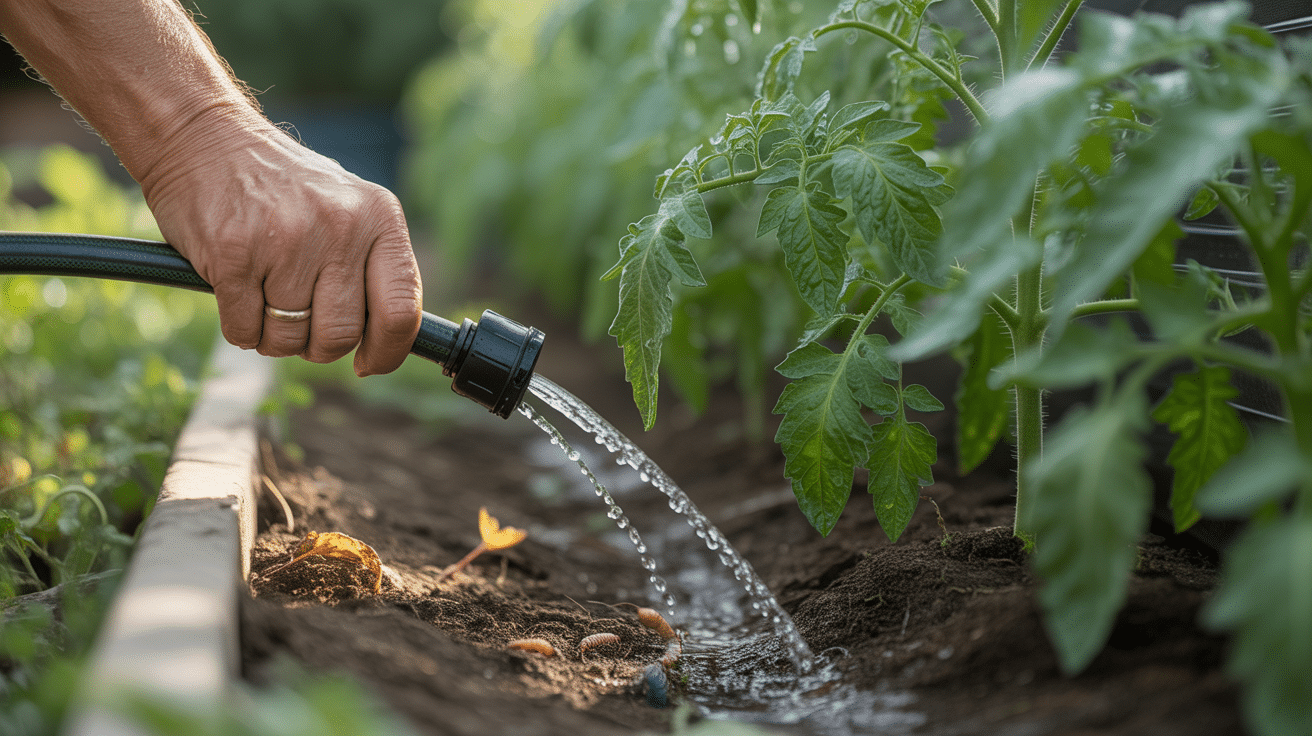
This technique ensures water reaches the entire root system instead of just wetting the surface. Deep watering encourages roots to grow downward, making plants stronger and more drought-resistant over time.
Materials required: Soaker hose or watering can with shower head attachment, mulch
Instructions:
- Water slowly at the base of plants until soil is moist 6-8 inches deep
- Apply water directly to soil, not leaves
- Wait until top 2 inches of soil dries before watering again
- Check depth by inserting finger or small trowel into soil
2. Mulching Technique
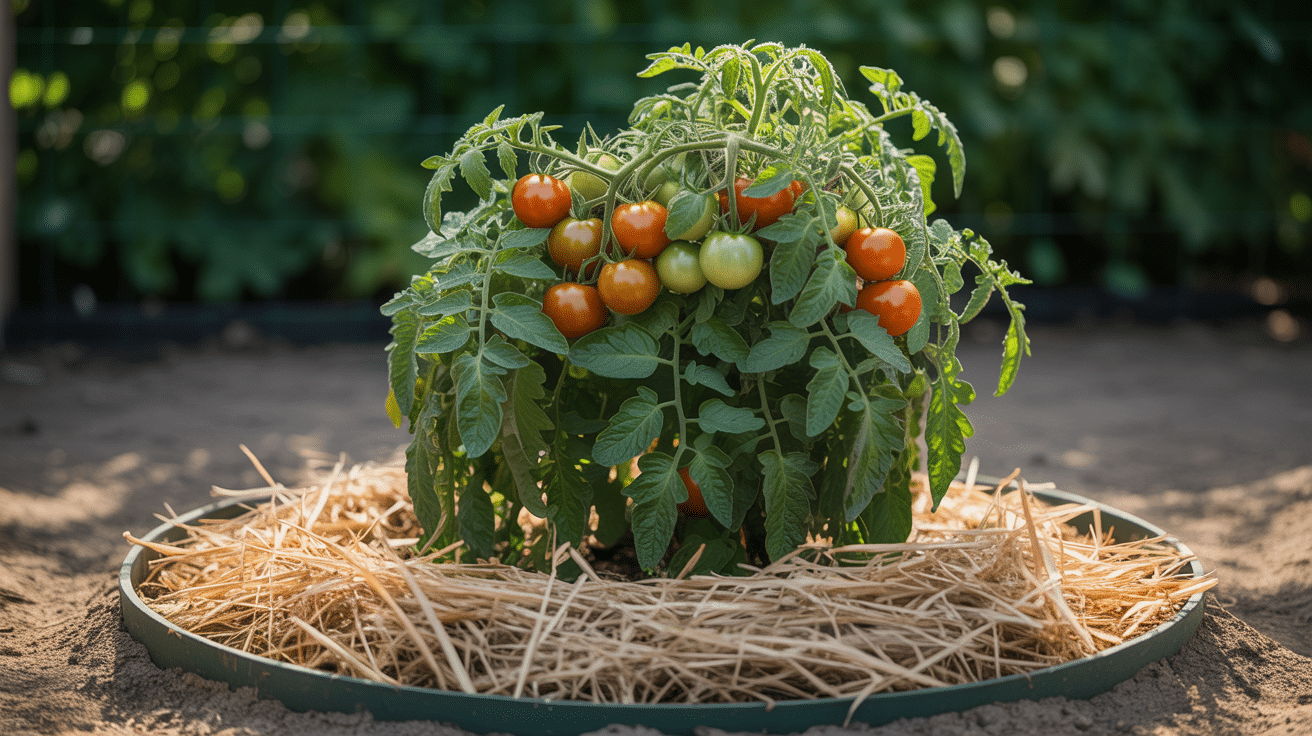
Mulch acts as a protective layer that holds moisture in the soil and blocks hot sun from drying it out. It also helps control weeds that compete for water.
Materials required: Organic mulch (straw, dried grass, wood chips, or compost)
Instructions:
- Clear area around stem base (3-inch circle)
- Add 2-3 inch layer of mulch around plants
- Extend mulch to cover entire root zone
- Refresh mulch monthly as it breaks down
3. Self-Watering System Setup

This low-maintenance option provides steady moisture without daily attention. It works great for busy gardeners or during hot spells.
Materials required: Plastic bottles, scissors, small rocks
Instructions:
- Poke 3-4 small holes in bottle cap
- Cut bottom off plastic bottle
- Bury bottle cap-down next to plant
- Fill bottle with water every few days
- Place one bottle per plant
4. Humidity Trays for Containers
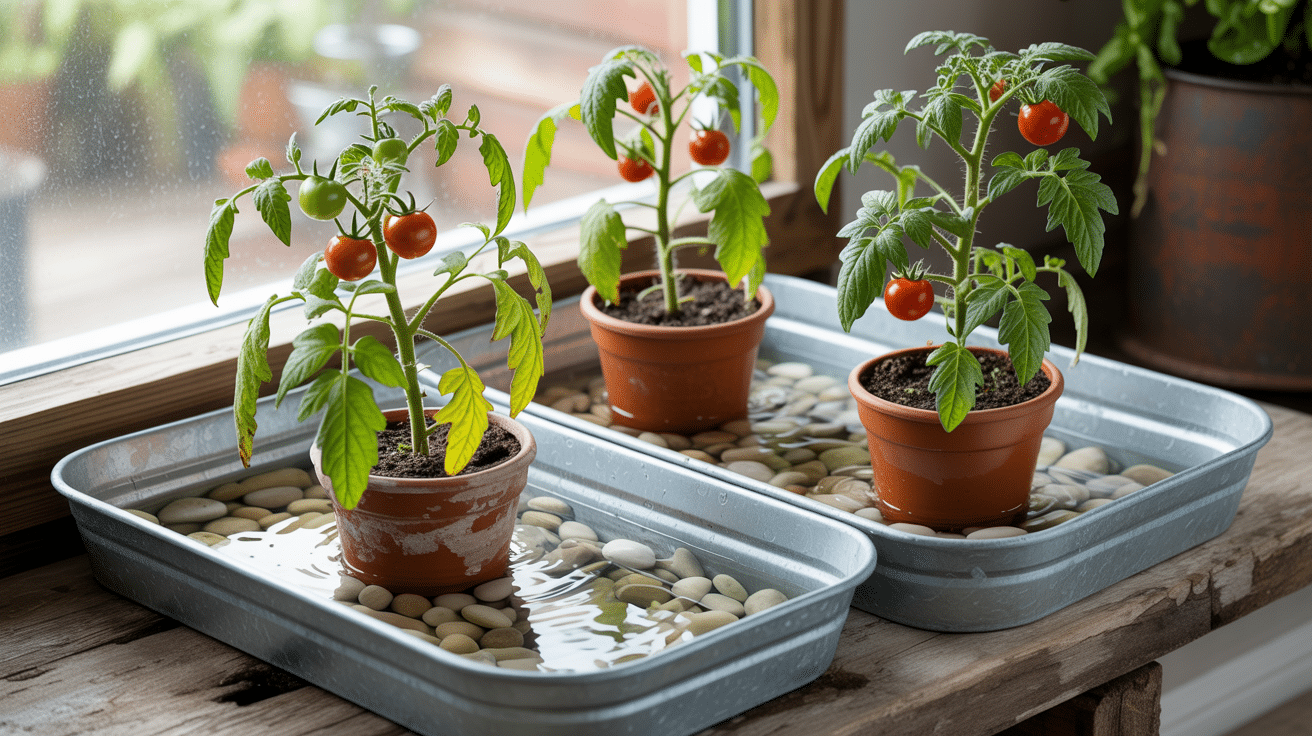
These trays add moisture to the air around plants. They work well for container gardens, especially in dry or windy locations.
Materials required: Shallow trays, pebbles, water
Instructions:
- Fill tray with small pebbles
- Add water just below pebble tops
- Place plant containers on pebbles
- Refill as water evaporates
- Keep water level below pot bottoms
5. Water Collection System
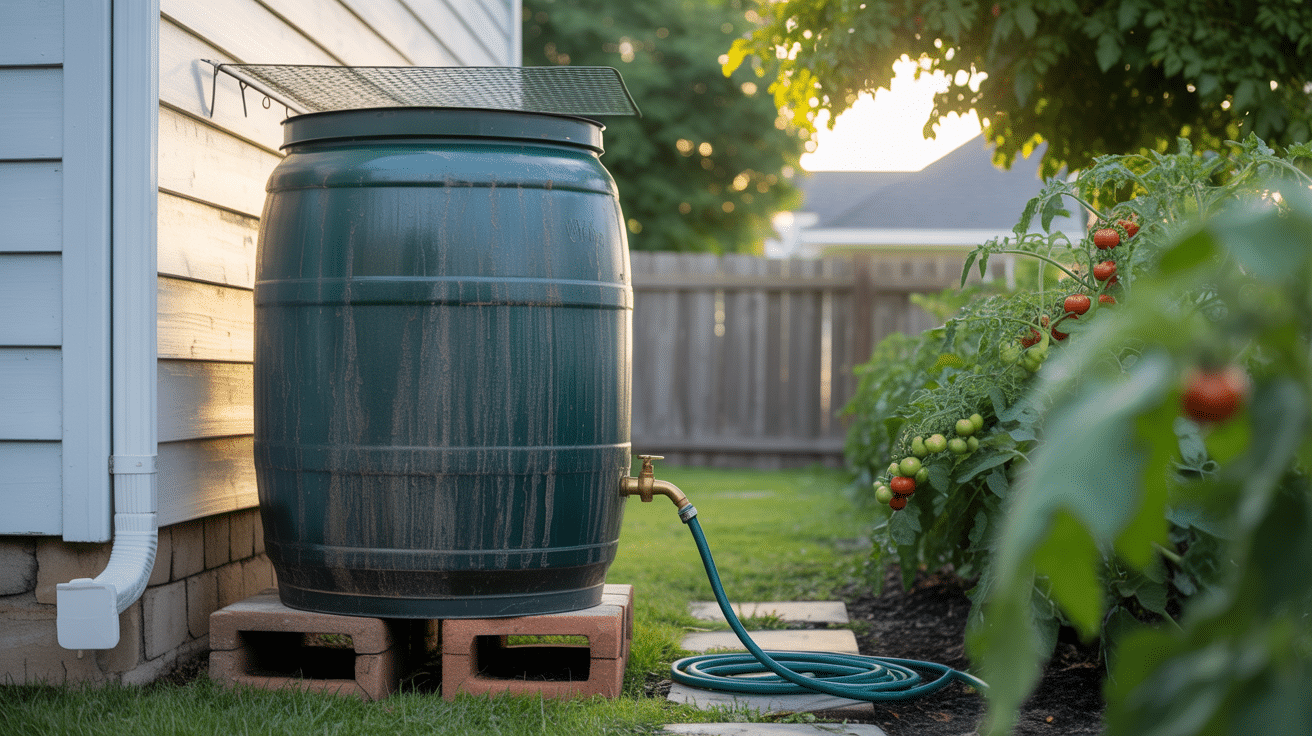
Rain collection saves money and provides chemical-free water for your plants. Plus, rainwater contains nitrogen that helps plants grow.
Materials required: Rain barrel, gutter diverter, hose
Instructions:
- Place barrel under downspout
- Cover top with screen to prevent debris
- Install spigot at bottom for easy access
- Place the barrel higher for better water pressure
- Use collected water within one week
An underwatered tomato plant can be prevented with any of these methods. Try the one that fits your garden setup and time availability best.
Reviving an Underwatered Tomato Plant
Finding an underwatered tomato plant in your garden calls for quick action. I’ve tested these methods many times, and they work well to bring thirsty plants back to health when used correctly:
1. Emergency soak treatment
Fully submerge the root ball in water for 30 minutes if in containers, or create a soil basin around garden plants and fill it twice with water. This quick fix allows roots to take up water fast and can prevent plant loss when leaves are severely wilted.
2. Step-up hydration schedule
Water lightly twice daily for three days rather than giving one heavy soak. This method helps stressed plants take up water without shocking the roots, which can happen when dry soil gets too wet too quickly.
3. Prune damaged portions
Remove yellow or brown leaves that won’t recover to help the plant focus energy on healthy growth. Cut these with clean scissors or pruners, as damaged leaves take resources but don’t help the plant create food.
4. Apply diluted seaweed solution
Water with a half-strength seaweed extract solution, which contains growth hormones and nutrients that help plants recover from stress. This natural booster speeds recovery and strengthens cell walls.
5. Temporary shade provision
Set up cloth or screen that blocks 30-50% of sunlight for 3-5 days while the plant recovers. Reducing water loss through leaves gives roots time to heal and resume normal water uptake functions.
6. Foliar misting
Spray leaves with plain water during early morning or evening hours to increase humidity around the plant. This reduces water loss through leaves while roots are still recovering their ability to supply moisture to the plant.
These revival techniques can bring plants back from severe drought stress. Remember that prevention is easier than cure, so check your garden daily during hot weather to catch problems early.
Common Mistakes to Avoid
Even experienced gardeners sometimes struggle with proper watering techniques.
Having an underwatered tomato plant is just one side of the problem – there are several common mistakes I’ve seen people make when caring for their plants:
- Watering only the surface soil instead of ensuring moisture reaches the deeper root zone.
- Spraying water on leaves during hot sunny days, which can cause leaf burn from water droplets magnifying sunlight.
- Sticking to a rigid watering schedule without checking soil moisture levels first.
- Using cold water directly from the tap, which can shock plant roots and slow growth.
- Watering at night, which increases the risk of fungal disease development.
- Forgetting to adjust watering frequency during different weather conditions or growth stages.
- Assuming rainfall is enough without checking how much water actually reached the soil.
Avoiding these mistakes will help your tomato plants stay healthy throughout the growing season.
Final Thoughts
Growing healthy tomatoes takes attention to water needs. When you know what to look for, you can spot water problems fast.
The methods I’ve shared work well in my garden and can work in yours too. Deep watering, mulching, and keeping a good schedule prevent most problems before they start.
If you do find your plants thirsty, the revival methods can bring them back quickly.
What matters most is paying attention to your plants daily. They’ll tell you what they need if you learn to listen. Water properly, and you’ll enjoy juicy, tasty tomatoes all season long.
What watering challenges have you faced with your tomato plants? Share your stories in the comments below – I’d love to hear what worked for you!
Frequently Asked Questions
Should I Water Tomatoes Every Day?
No, not always. Water based on soil moisture and weather. During hot days, daily watering may be needed. In cooler weather, water every 2-3 days. Container plants need more frequent watering than garden plants.
How to Tell the Difference Between Underwatering and Overwatering
Underwatering shows wilting that improves after watering, dry soil, and yellow bottom leaves. Overwatering causes wilting that doesn’t improve after watering, soggy soil, and yellowing throughout the plant. Check soil moisture before deciding.
Should I Mist an Overwatered Tomato Plant?
No, don’t mist an overwatered tomato plant. This adds more moisture to already wet conditions. Instead, improve drainage, let soil dry out slightly, and only water when the top inch of soil feels dry.


